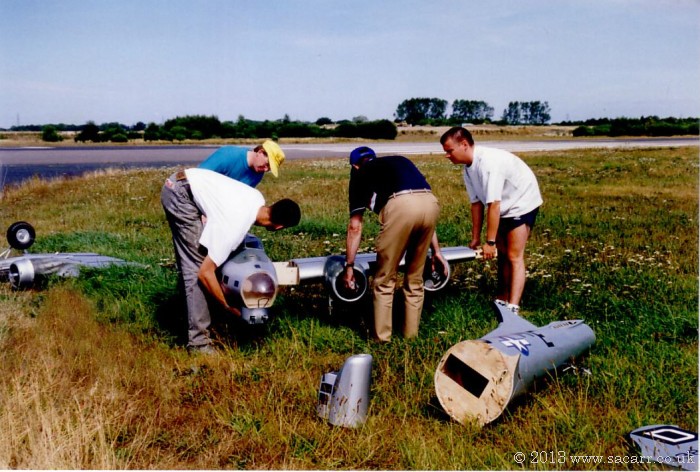| Test
Flight - August 23rd 1995
Despite the B-17 parts being scattered across the grass, the parts were treated with great care during transport and assembly. This is a very physical task with the inner wings needed attaching with 12 bolts, accessed through the bomb bay, top turret and radio room hatch. |
|
|
|
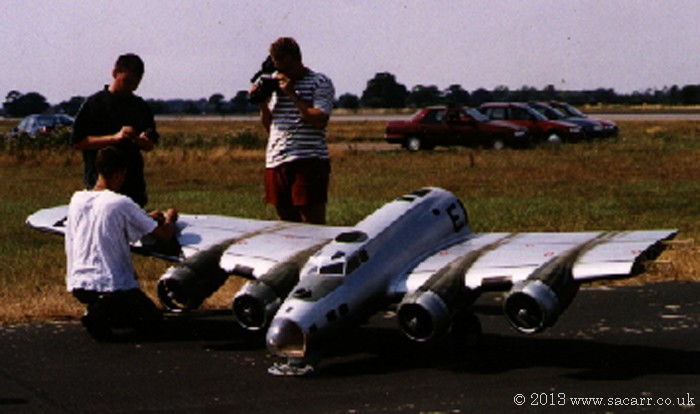
|
| At
this stage in the models life, it was being transported in a caravan.
Unloading took half an hour and then assembling the aircraft took an hour. There were 10 major components to be connected electrically and mechanically.
After that, the props to add, each having six bolts.
After the range checks etc, the engines were started. Then came some taxi trials to see how the B-17 handled on the ground. OK - It's the day of the test flight. The range checks were fine, the taxi trials went ok, all is ready - except the wind which was across the runway. So we did. We sat there for a good 45 minutes before the wind slowly turned along the two mile long Elvington runway. So the time came, the tanks were topped up, the engines started, and the model wheeled to the runway. |
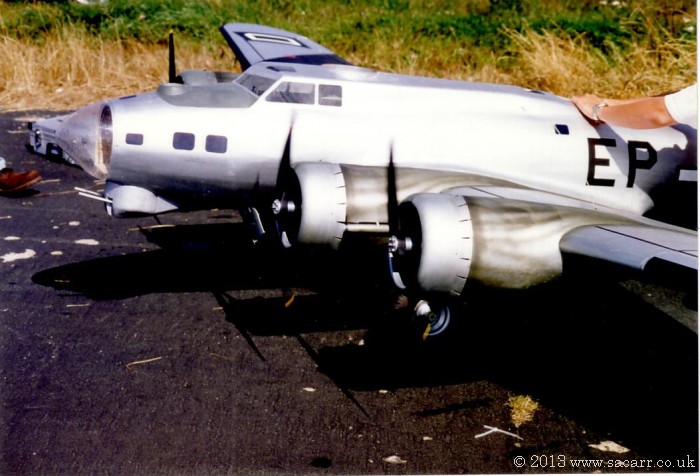 |
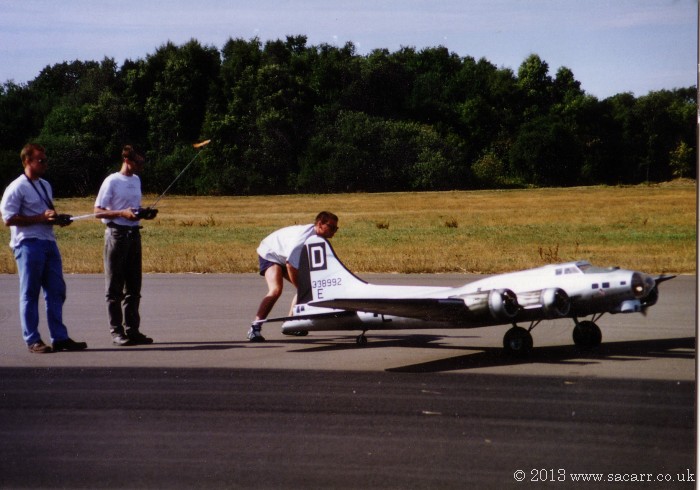 |
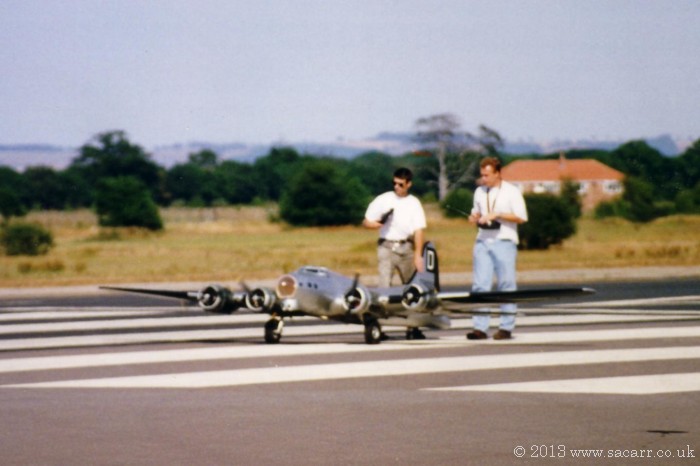
|
| The last engine run up checks were performed and everything was set to go. I opened the inner throttles and Andrew, the co-pilot, followed with the outer engines. The model tracked fairly straight due to the head wind against the huge fin.
After a ground roll of two to three hundred feet, the B-17 lifted off into a gentle right hand turn. I called "Gear Up", and Andrew hit the switch. Slowly the motors wound up the wheels. |
|
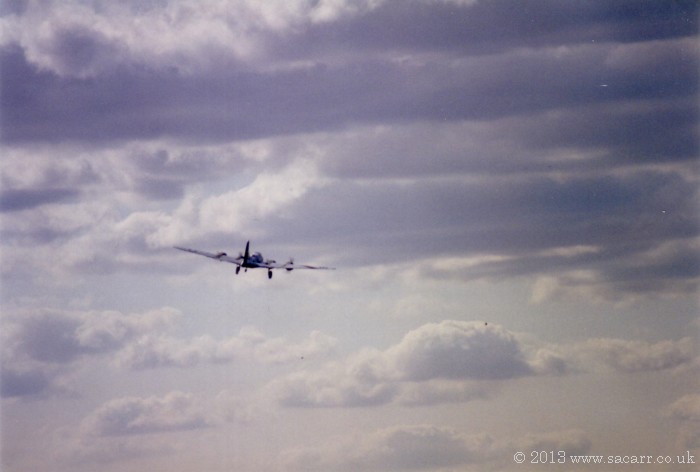
|
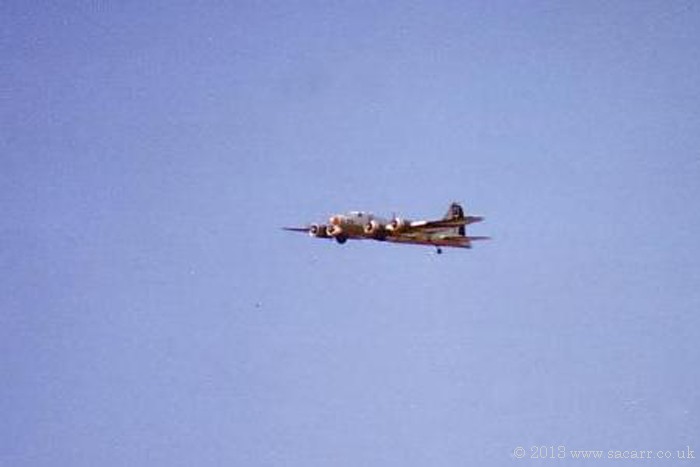 |
| The gear tucked away in the first turn and a little trimming was needed, but not much.
I then turned back to the left in a proceedure turn, bringing the B-17
back down the runway and then turned back into wind again up the runway. As I leveled out into wind on the first circuit, one of the crew shouted "Heli, break right" A fullsize RAF Search and Rescue Sea-King came low over the field at about 100 feet, straight for the B-17. I banked hard right and he saw me; pulled the chopper up on its tail, stall turned ( or what ever helis do ) and headed away. I'd love to know what he put in his flight report! The next 10 minutes went without problems flying figure 8 circuits, asymmetric and stall tests. |
|
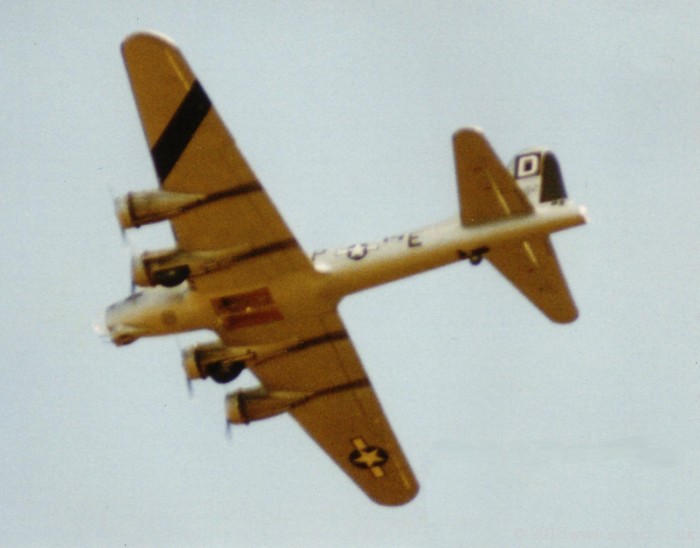
|
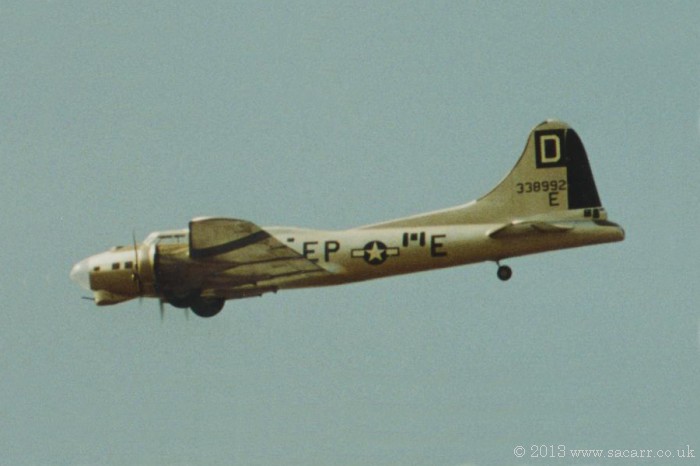 |
| Time to land. Gear was called down on the up wind leg and 1/3 flap in the first turn. Power was reduced and 2/3 flap on the down wind leg. Power was reduced further and full flap called in the last turn lining up with the runway. The touchdown was perfect but for a slight skip. The engines were shut down, and the model retrieved with smiles all round. |
|
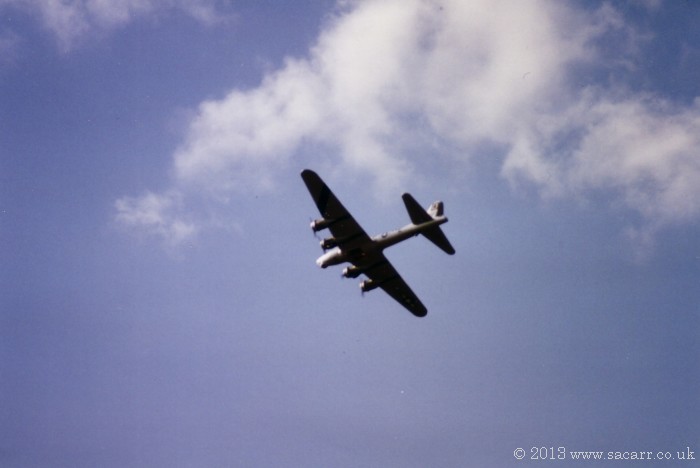 |
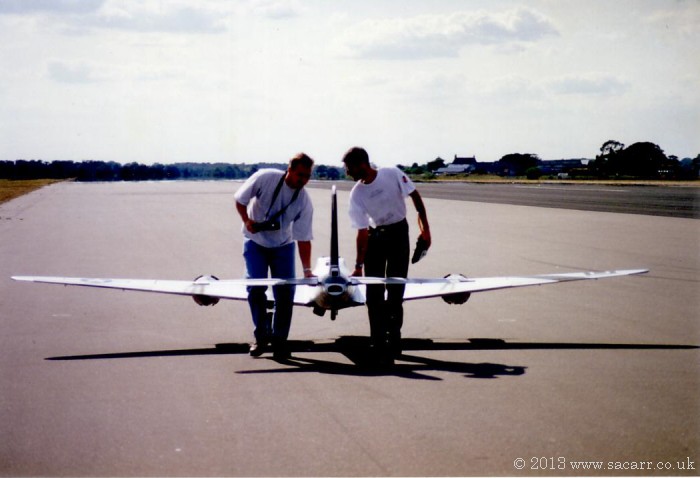
|
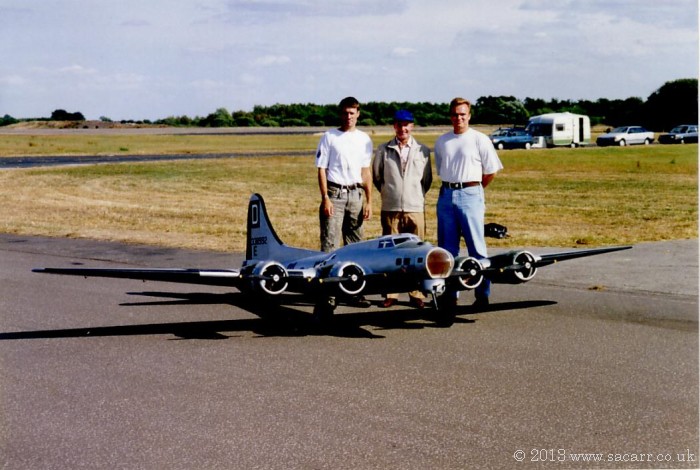 |
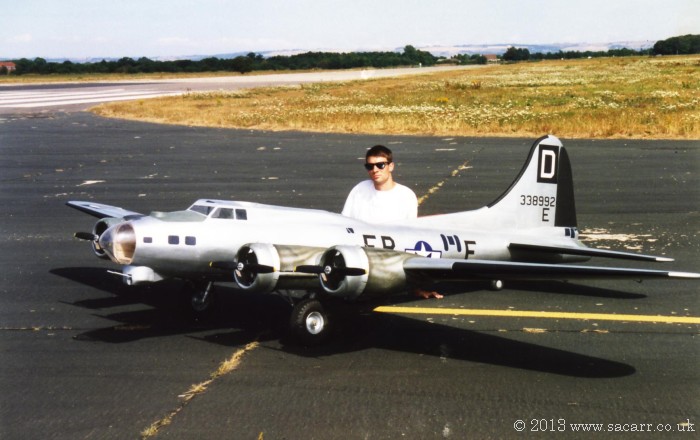 |
